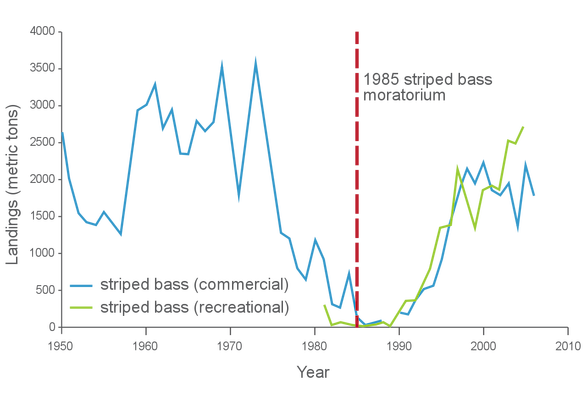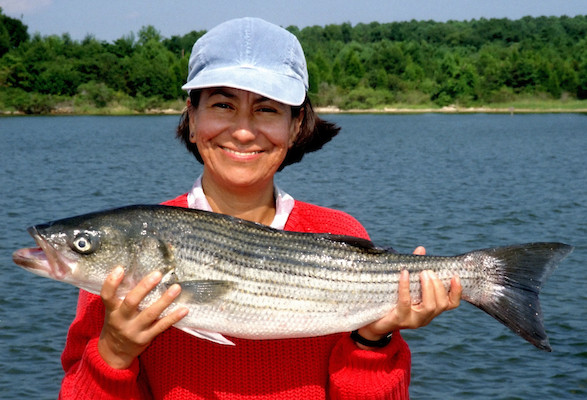Restoring the striped bass
Striped bass — also known as rockfish or stripers — has been one of the most sought-after commercial and recreational fish in the Chesapeake Bay.
But, by the mid-1980s, the population had tumbled to the lowest numbers in decades. It was determined that a combination of overfishing, pollution, and changing water temperatures were the causes.
In 1985, Maryland imposed a total moratorium on striped bass. Virginia followed by banning striped bass fishing in spawning areas, and fours years later, they also imposed a total ban on striped bass fishing.
During the years of the moratorium, fishery managers continued to monitor striped bass populations in Chesapeake Bay. In 1989, both Virginia and Maryland lifted their moratoriums on striped bass, and limited commercial and recreational fishing resumed.


Regulating blue crab harvests
Blue crabs support commercial and recreational fisheries across the region, but poor water quality, seagrass habitat loss, harvest pressure, and natural predation can affect their continued health.
During the last decade, blue crab populations in the Chesapeake Bay reached some of their lowest numbers. Harvest regulations were put in place for the 2008 season and the population rebounded.

